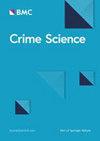与青少年暴力犯罪行为相关的青少年犯罪诱因组合
IF 2.6
Q1 CRIMINOLOGY & PENOLOGY
引用次数: 0
摘要
本研究确定了与成年早期暴力犯罪行为相关的童年风险因素组合。研究利用警方数据,从有少年缓刑史的年轻成年男性中抽取暴力犯罪者和非暴力犯罪者样本。风险因素是从他们的青少年缓刑档案中提取的。通过单一的分类树分析,将这些因素归纳到一个具有良好预测准确性的暴力犯罪行为决策树中。有两种风险因素组合与暴力犯罪行为的高风险相关。第一种是与犯罪同龄人有中度交往、在毒品影响下犯罪以及来自不健全家庭的少年犯。第二类少年犯的特点是与犯罪同龄人有严重的牵连,其家庭成员也有犯罪行为。童年时期出现抑郁症状与暴力犯罪行为的低风险相关。这些组合具有重要的临床意义,因为它们为个性化干预提供了目标。本文章由计算机程序翻译,如有差异,请以英文原文为准。
Constellations of youth criminogenic factors associated with young adult violent criminal behavior
This study identified constellations of childhood risk factors associated with violent criminal behavior in early adulthood. Police data were used to sample violent and nonviolent offenders from a population of young adult males with a history of juvenile probation. Risk factors were retrieved from their juvenile probation files. A single classification tree analysis organized these into a decision tree for violent criminal behavior with good predictive accuracy. Two constellations of risk factors were associated with a high risk of violent criminal behavior. The first consisted of juvenile delinquents who had been moderately involved with criminal peers, who had committed offenses under the influence of drugs, and who came from a dysfunctional family. The second was characterized by having been severely involved with criminal peers and having had criminal family members. Presenting with depressive symptoms in childhood was associated with a low risk of violent criminal behavior. These constellations bear clinical importance as they provide targets for personalized interventions.
求助全文
通过发布文献求助,成功后即可免费获取论文全文。
去求助
来源期刊

Crime Science
Social Sciences-Cultural Studies
CiteScore
11.90
自引率
8.20%
发文量
12
审稿时长
13 weeks
期刊介绍:
Crime Science is an international, interdisciplinary, peer-reviewed journal with an applied focus. The journal''s main focus is on research articles and systematic reviews that reflect the growing cooperation among a variety of fields, including environmental criminology, economics, engineering, geography, public health, psychology, statistics and urban planning, on improving the detection, prevention and understanding of crime and disorder. Crime Science will publish theoretical articles that are relevant to the field, for example, approaches that integrate theories from different disciplines. The goal of the journal is to broaden the scientific base for the understanding, analysis and control of crime and disorder. It is aimed at researchers, practitioners and policy-makers with an interest in crime reduction. It will also publish short contributions on timely topics including crime patterns, technological advances for detection and prevention, and analytical techniques, and on the crime reduction applications of research from a wide range of fields. Crime Science publishes research articles, systematic reviews, short contributions and theoretical articles. While Crime Science uses the APA reference style, the journal welcomes submissions using alternative reference styles on a case-by-case basis.
 求助内容:
求助内容: 应助结果提醒方式:
应助结果提醒方式:


